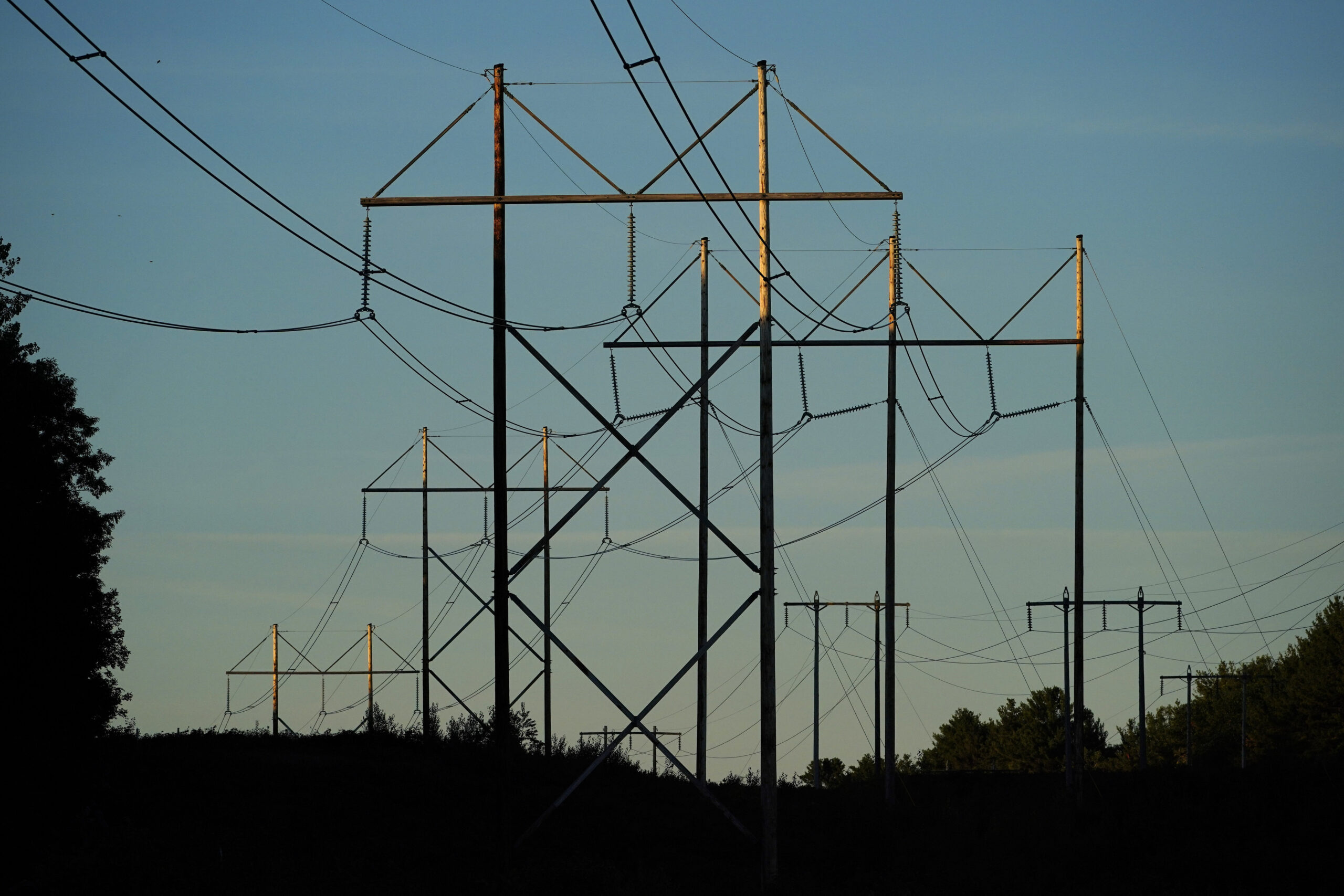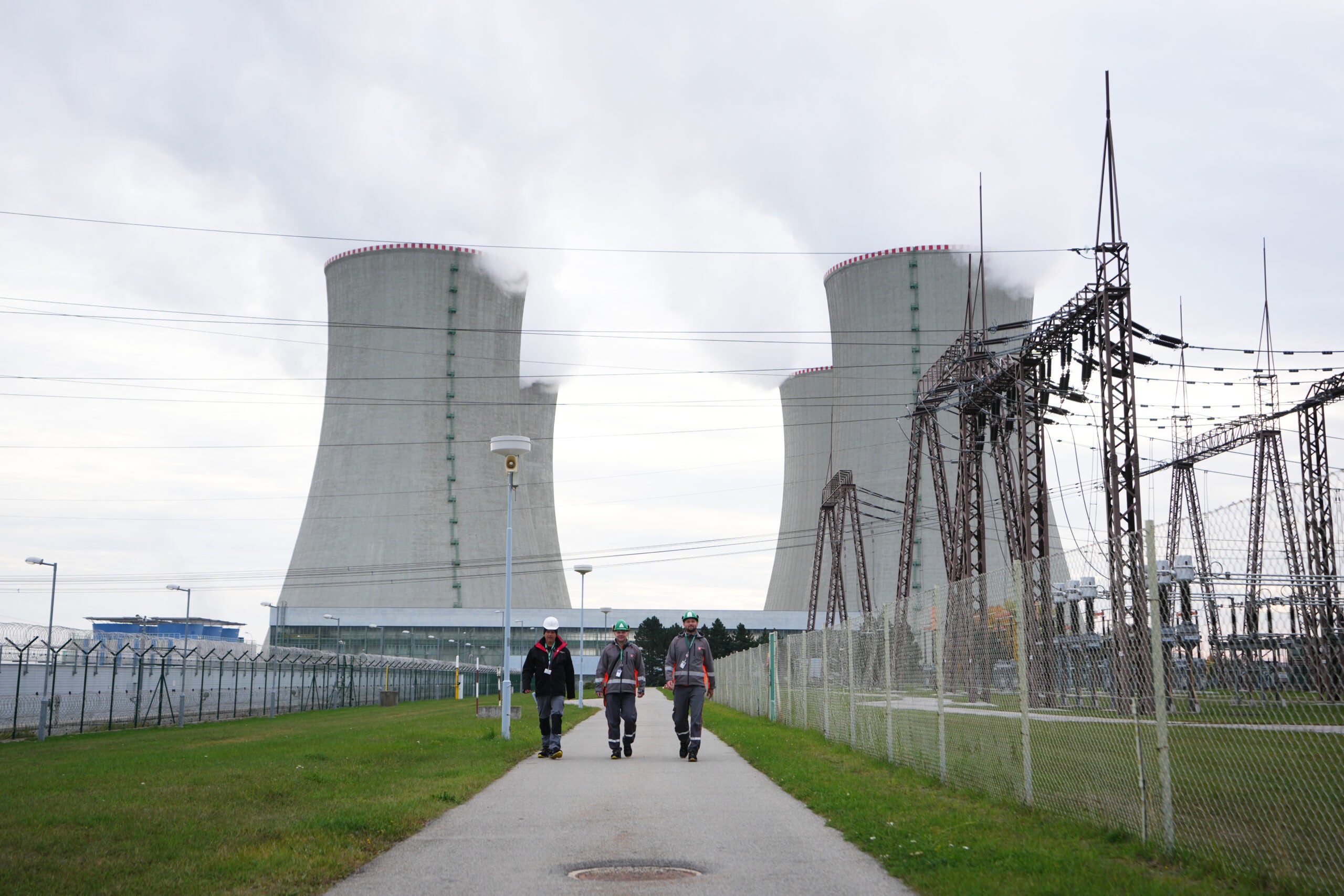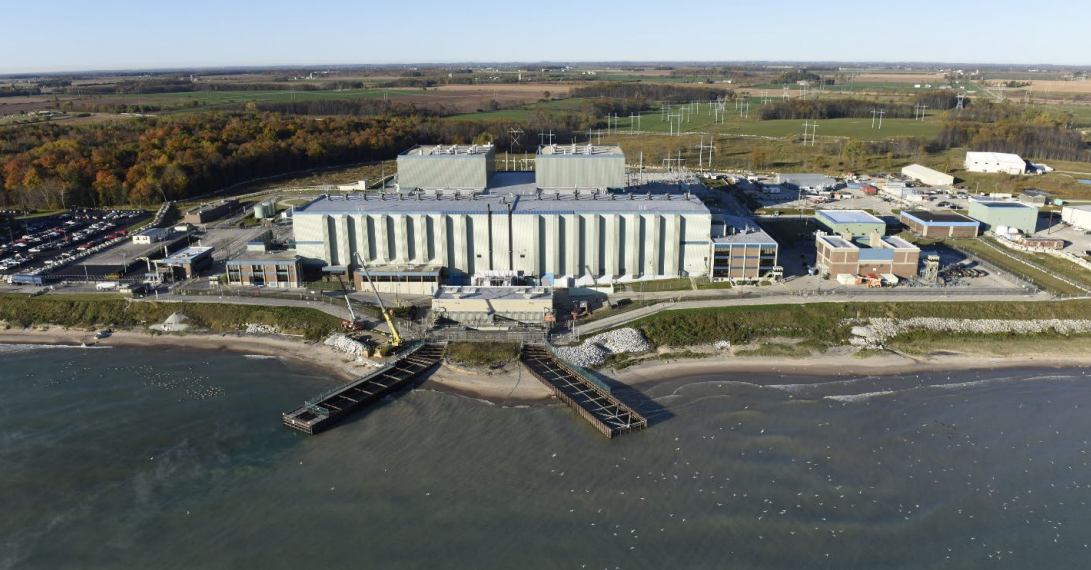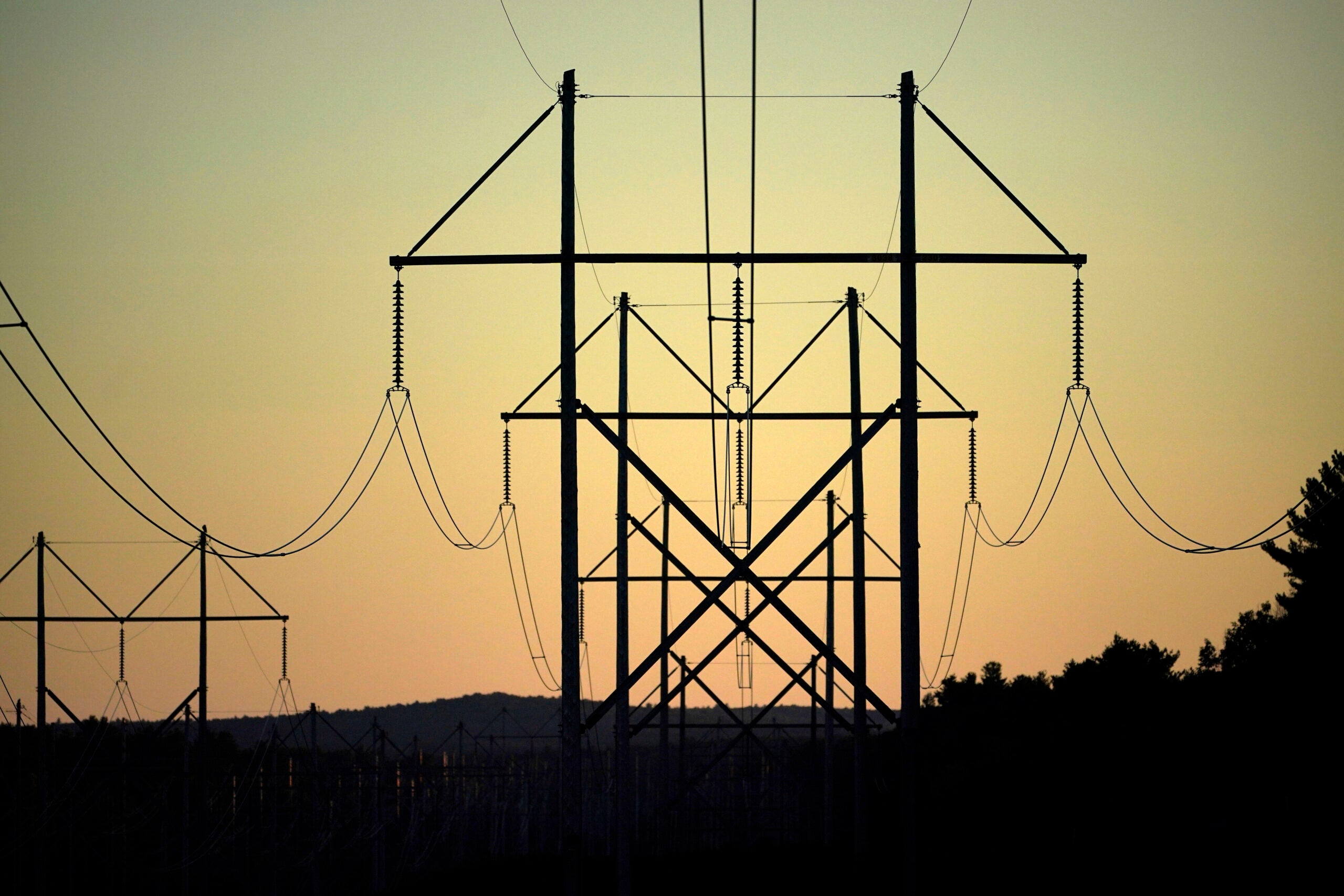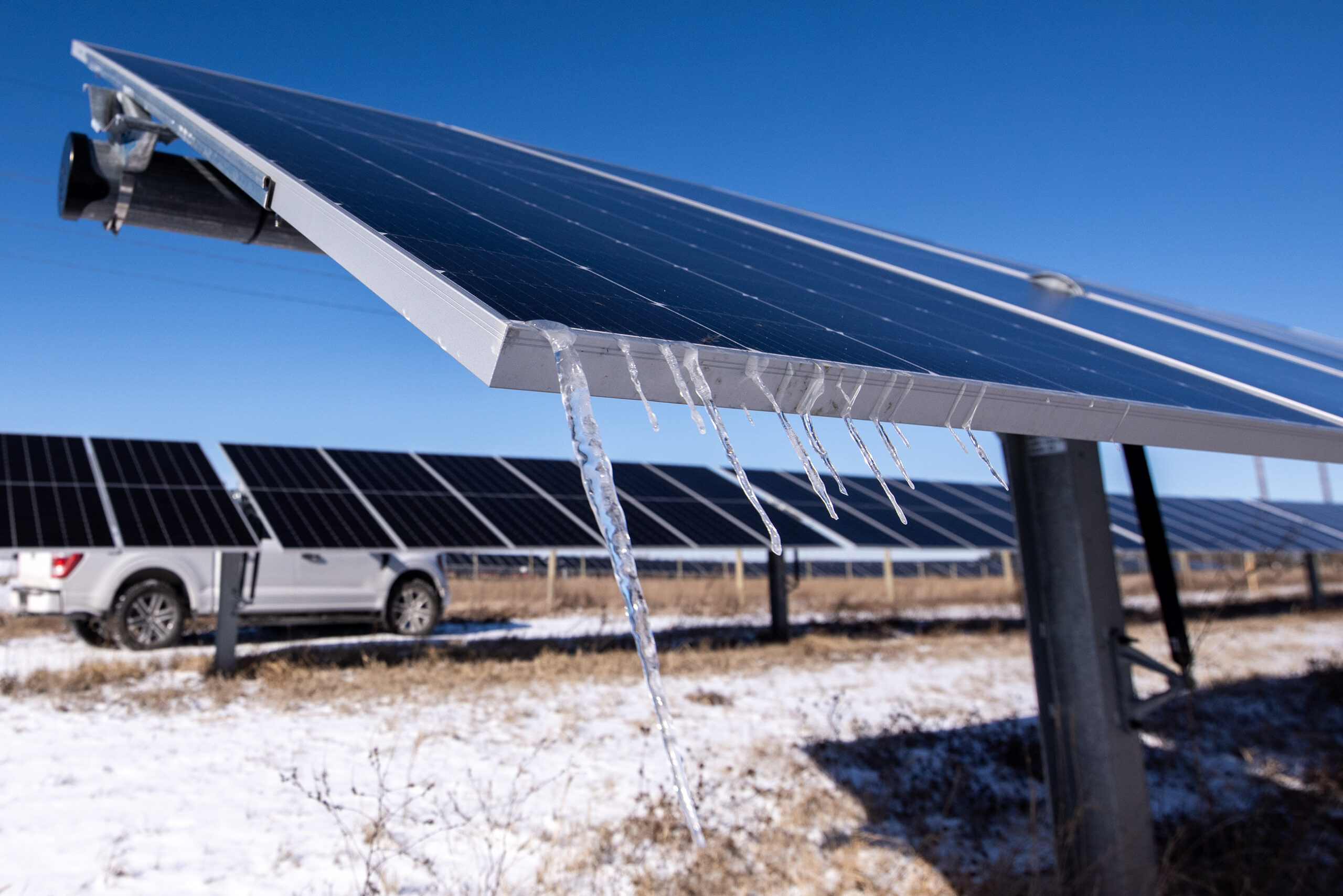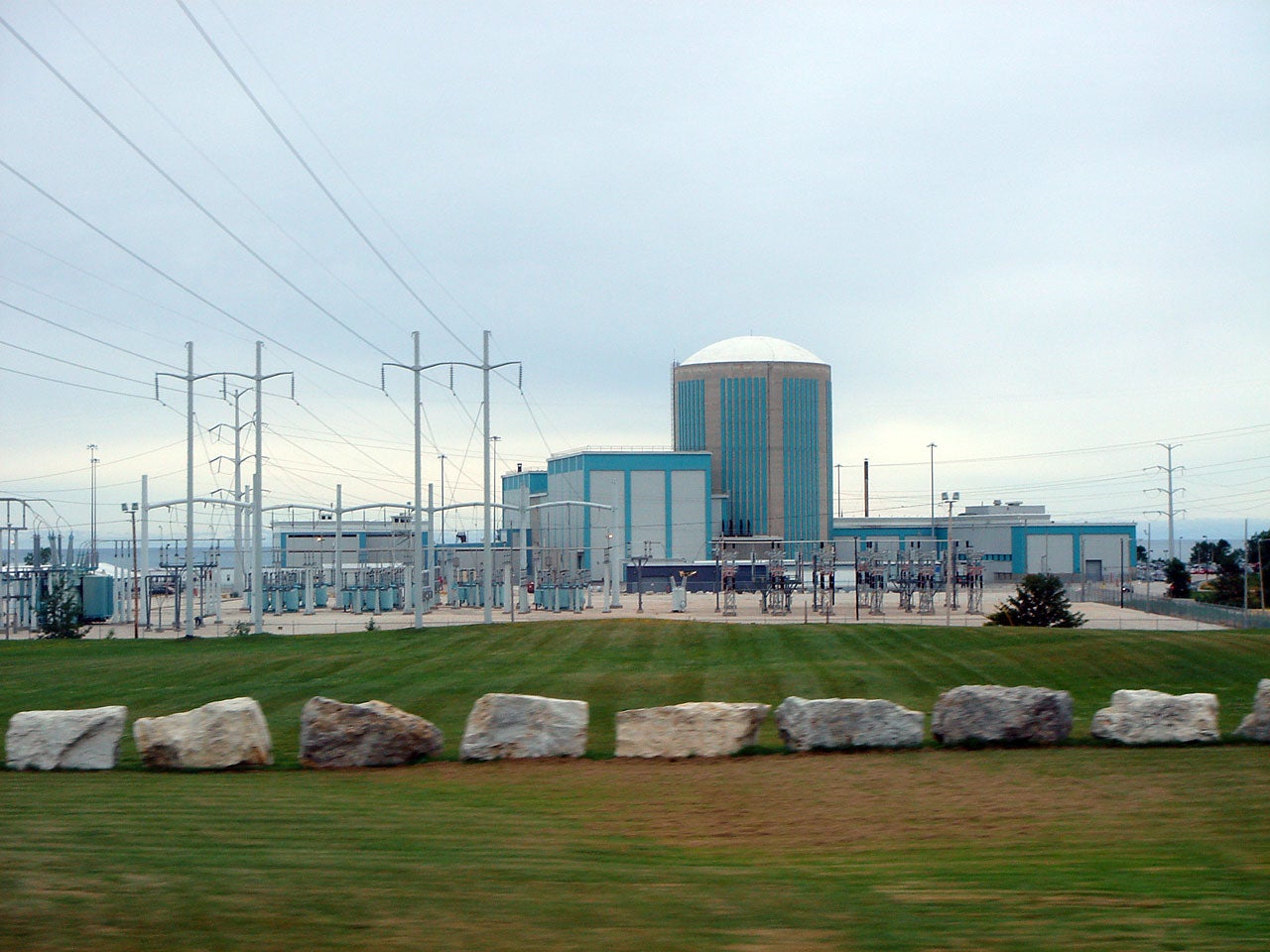The Midwest electric grid — which includes Wisconsin — should have enough resources to meet normal summer demands this year, but it could face shortages during peak demand levels from extreme heat events.
That’s according to the North American Electric Reliability Corp., or NERC, a utility watchdog that releases a summer reliability report each year. Its 2023 report found that two-thirds of North America is at risk of energy shortfalls this summer during periods of high demand.
That includes the Midcontinent Independent System Operator, or MISO, which manages the grid across Wisconsin and 14 other states. NERC says North America’s elevated risk outlook is driven by a combination of coal plant retirements, a possible spike in energy use and reduced reliability due to extreme heat.
News with a little more humanity
WPR’s “Wisconsin Today” newsletter keeps you connected to the state you love without feeling overwhelmed. No paywall. No agenda. No corporate filter.
“Increased, rapid deployment of wind, solar and batteries have made a positive impact,” said Mark Olson, NERC’s manager of Reliability Assessments, in a statement. “However, generator retirements continue to increase the risks associated with extreme summer temperatures, which factors into potential supply shortages in the western two-thirds of North America if summer temperatures spike.”
The report says MISO’s risk of being unable to meet reserve requirements is lower this summer compared to 2022, but there’s potential that energy reserves may not be able to meet demands during extreme heat events.
Wind energy output will be key to meeting normal summer peak demand and more extreme demand levels, the report said. That means low wind and high demand could result in more energy emergencies.
Wisconsin congressman, utility talk reliability
At a press conference Tuesday, U.S. Rep. Tom Tiffany, R-Hazelhurst, said this is the second year in a row NERC has issued warnings about Wisconsin’s grid reliability during periods of extreme heat.
“If you reduce your base load electrical generation — that is going on here in the state of Wisconsin — you’re going to make the grid more unstable, you’re going to make it less reliable,” he said. “We have to make sure that we do not reduce our baseload power sources here in Wisconsin.”
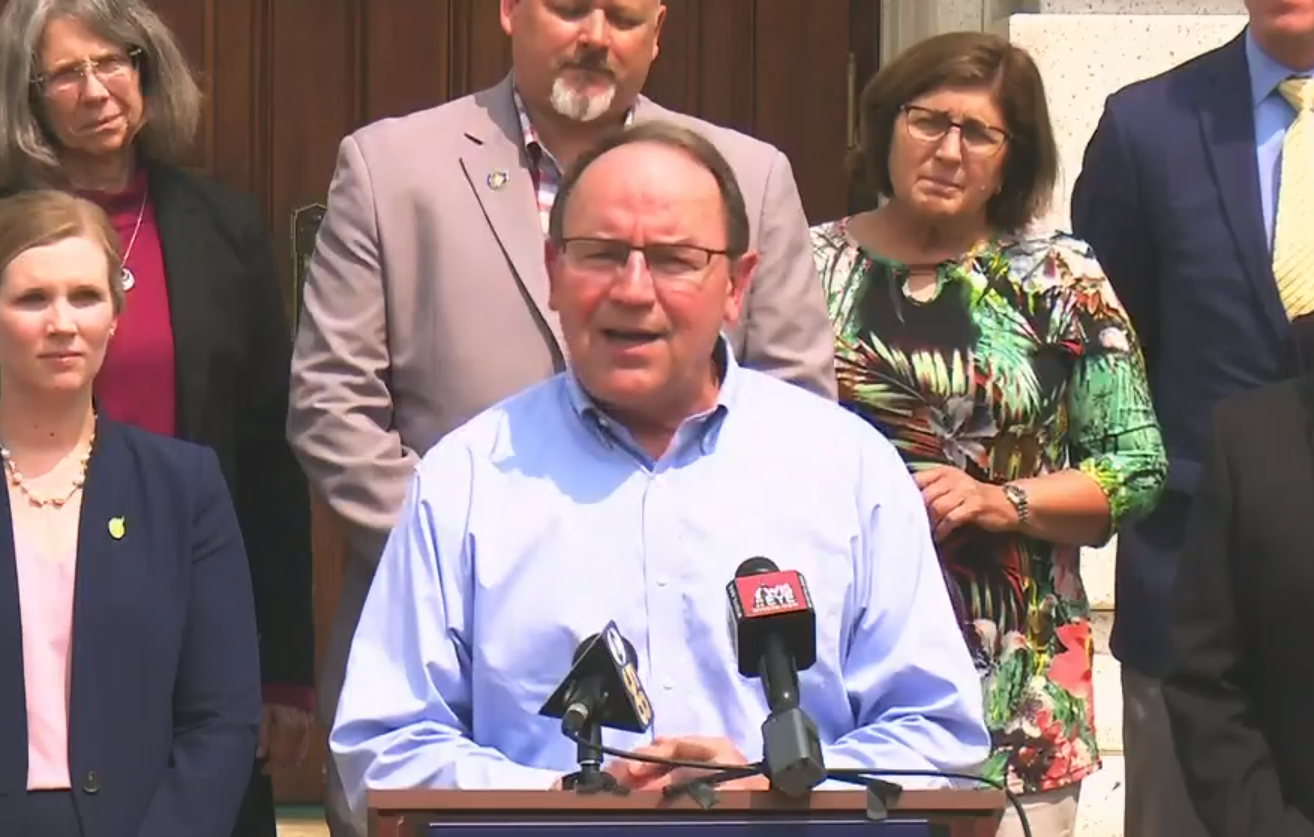
Last June, a few Wisconsin utilities announced they were delaying the retirement of coal power plants. Alliant Energy plans to retire its 400-megawatt Edgewater plant in Sheboygan by 2025 and its 1,100-megawatt plant in Columbia County by 2026. We Energies plans to shut down its two units at the South Oak Creek coal plant in Milwaukee County by May 2024 and its last two at the site by late 2025.
Brendan Conway is a spokesperson for WEC Energy Group, the parent company of We Energies and Wisconsin Public Service. He said maintaining grid reliability while dealing with solar supply chain challenges motivated the company to delay coal retirements at the Milwaukee plant.
“Truly nothing is more important than delivering affordable, reliable and clean energy to our customers,” he said.
WEC Energy Group plans to end coal-fueled generation by 2035. Conway said between 2030 and 2035, coal will primarily be used as a backup power source if the utility runs into situations where natural gas usage becomes constrained.
He added that power outages related to extreme temperatures are fairly rare in Wisconsin. More commonly, Conway says outages result from debris falling as a result of a severe weather event like thunderstorms or tornados, equipment failures and wildlife coming in contact with equipment.
To address future reliability, Conway said WEC Energy Group is investing $3.6 billion to replace aging electric infrastructure between 2023 and 2027.
“That’s everything from burying lines where it makes sense, putting up new technology and new equipment that can make finding outages easier, lessening the outage impact … (and) putting out new equipment that is designed to better withstand high winds, high extremes (and) can take more hits from branches,” he said.
New technologies needed to help address carbon goals, reliability
All five of Wisconsin’s major utilities have pledged to become carbon-neutral by 2050, but reducing emissions by 100 percent from 2005 levels is easier said than done.
Xcel Energy, which serves western and northwest Wisconsin, is the furthest along in terms of meeting carbon reduction goals. But Frank Prager, Xcel’s chief sustainability officer, said the utility will have an uphill battle once it meets the goal of an 80 percent reduction by 2030.
While the company is investing in battery storage for its renewable resources, he said it needs a “dispatchable resource” that can be counted on when the wind isn’t blowing and the sun doesn’t shine.
“We need to have something in place that we can turn on and turn off. Today, we don’t have that kind of resource — other than the nuclear plants we operate in Minnesota,” he said. “But we’re very optimistic and we’re seeing a lot of technology development that’s going to really make a difference in our ability to get to 100 percent carbon-free energy.”
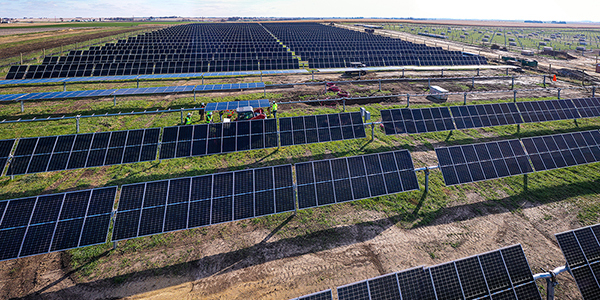
Likewise, Conway said WEC Energy Group will be able to hit its 80 percent target by 2030 with technology currently available. But it’s currently exploring new technologies to maintain reliability as it reduces carbon dioxide emissions.
Last fall, the company successfully led a first-of-its-kind hydrogen power test that blended hydrogen with natural gas to power a generating unit serving customers at a WEC Energy Group subsidiary in Michigan.
“We saw a reduction of carbon emissions, we saw a reduction of methane emissions,” Conway said. “The engine had very little changes to its performance, and it was a very, very positive sign that these units that currently exist today could be blended with hydrogen.”
WEC Energy Group is also working on a pilot to test a new form of long-duration energy storage at its Valley Power Plant in Milwaukee that could discharge energy for up to twice as long as typical lithium-ion batteries.
“We want to make sure that no matter what the situation is outside with the weather, with the wind, with the sun, that our customers can get the energy they depend on,” Conway said. “They want to know that when they flip on their light switch or they plug in their phone, that the lights are going to go on, that that phone is going to charge — and we understand that.”
Proponents say nuclear could address carbon reduction, reliability
One option that could increase base load power generation and help reduce carbon emissions is nuclear energy, something that may have bipartisan support in Wisconsin.
Former Republican Gov. Scott Walker signed a bill lifting the state’s 30-plus year nuclear moratorium in 2016. And a U.S. Department of Energy official said at a recent Wisconsin Eye event that nuclear power is the only way to reach the Biden administration’s goals to cut carbon emissions in half by the end of the decade. Democratic Gov. Tony Evers also included exploring nuclear options in the state’s clean energy plan released last year.
At Tuesday’s press conference, state Rep. Patrick Snyder, R-Schofield, said nuclear energy should be part of the equation for the state’s transition toward clean energy.
“It’s very safe. I think people have notions of Chernobyl or Three Mile Island, and put nuclear energy at an automatic, ‘No,’” he said. “But if we want to meet some of the goals about zero carbon in the future and security of our electric power grid, then nuclear energy has to be on the table.”
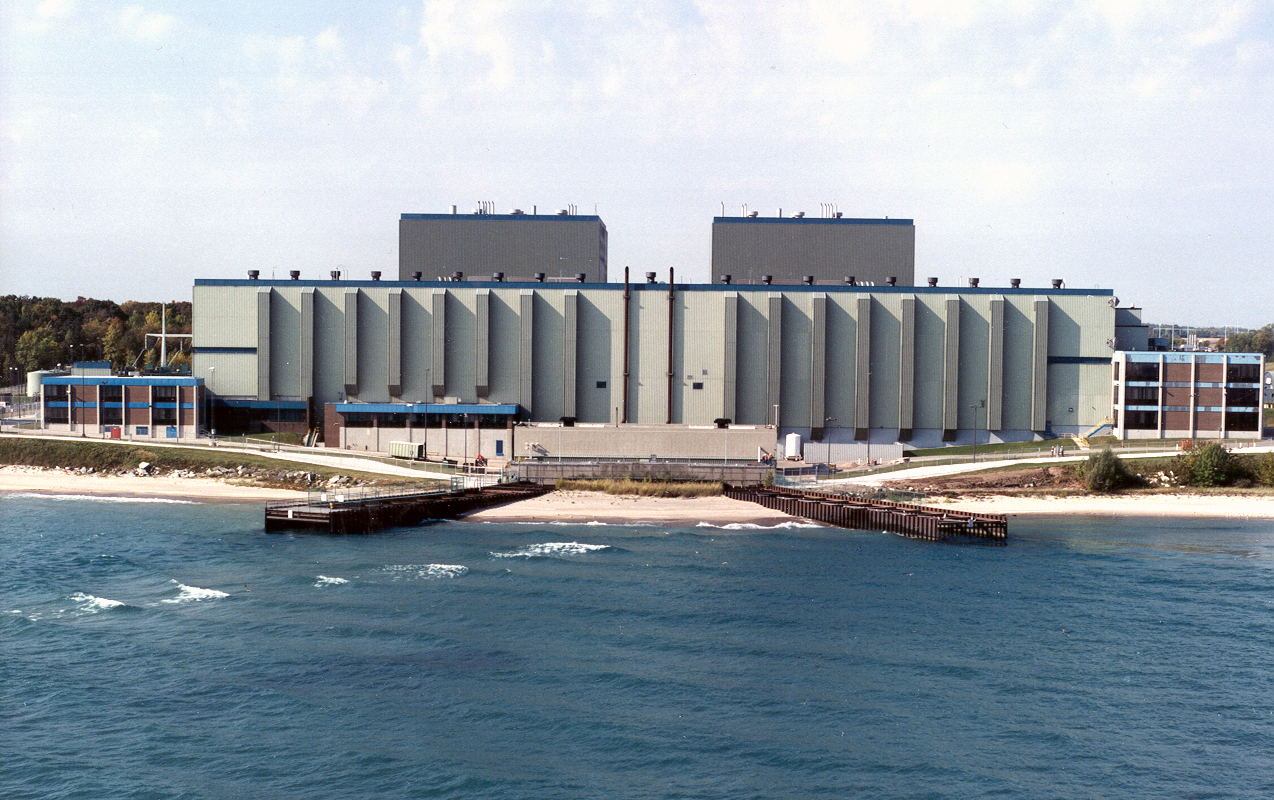
Xcel’s two nuclear facilities in Minnesota have also played a role in why its Midwest system, which includes Wisconsin, now produces 69 percent of its energy without carbon. But the utility has faced scrutiny after water containing mildly radioactive material leaked from Xcel’s nuclear plant in Monticello for months before it was disclosed to the public.
The Point Beach facility in Two Rivers is Wisconsin’s only operating nuclear power plant. But Dairyland Power Cooperative announced last year that it’s exploring the addition of nuclear energy to its power mix. The power provider has entered into an agreement with Oregon-based NuScale Power to evaluate the potential for using NuScale’s advanced reactor technology.
During the press conference Tuesday, Tiffany also expressed support for nuclear energy as a way of providing carbon-free energy to support grid reliability.
“If you believe in a carbon-free future — if that’s one of your goals, if you think that’s very important — there’s one answer at this point, and that is nuclear,” Tiffany said.
Wisconsin Public Radio, © Copyright 2026, Board of Regents of the University of Wisconsin System and Wisconsin Educational Communications Board.
